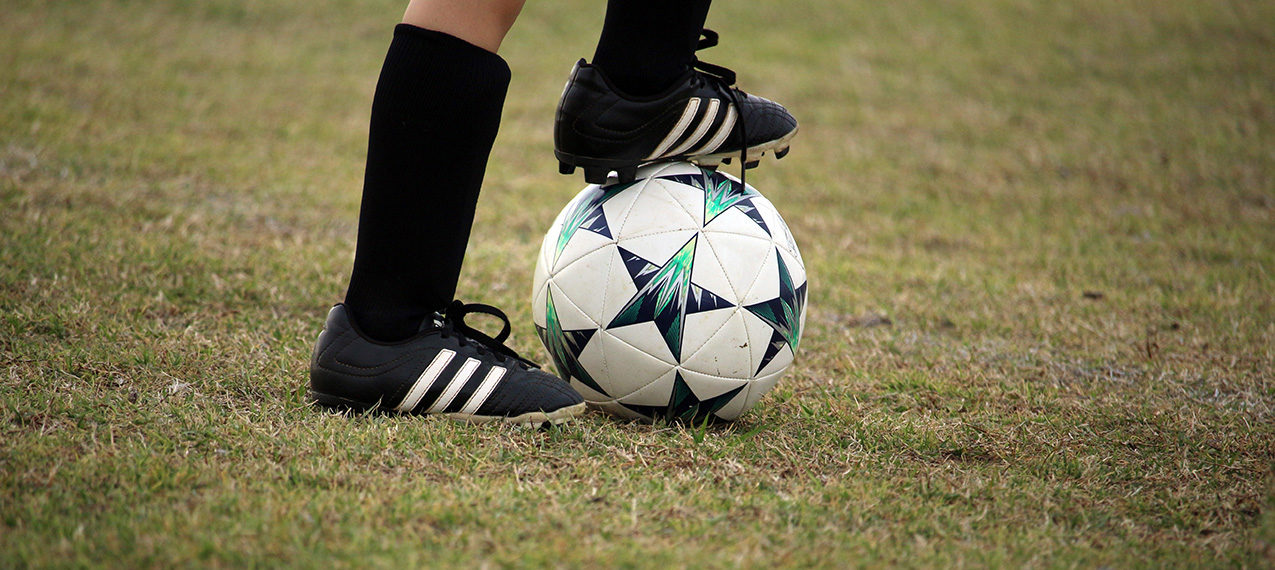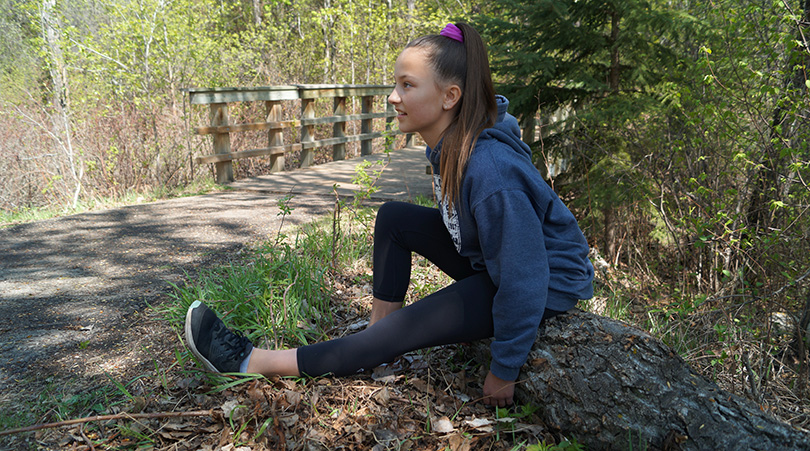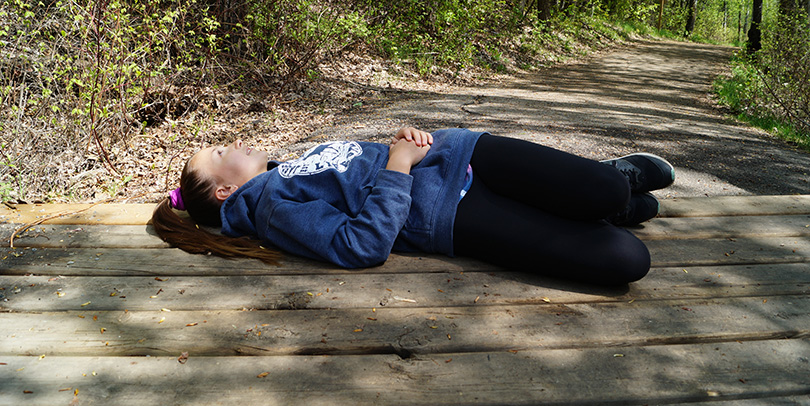With the soccer season never-ending, the passion for the beautiful game knows no bounds. Whether you’re playing indoors with the perfect turf or outside under the open sky, this comprehensive guide is your ultimate playbook for staying injury-free throughout the seasons.

From seasoned pros to weekend warriors, soccer offers a path to health and enjoyment. Did you know that during a game, the average player can cover a staggering distance of up to ten kilometers? The exact mileage depends on your position and skill level, but even goalkeepers have been known to dash almost 5 kilometers during a 90-minute match. Whether you’re playing in a recreational soccer league or training for professional glory, one thing is certain: you can expect to be running—a lot.
But amidst all the excitement and action, the possibility of injuries lingers. It’s like the opponent you didn’t see coming, ready to tackle you when you least expect it. The good news? You can be prepared. You can be proactive.
The Most Common Soccer Injuries
The soccer pitch can be a battlefield where players occasionally face injuries. Understanding the common culprits is the first step toward preventing them:
- Concussions: These head injuries can occur from collisions or accidental impacts, affecting the brain. Recognizing the signs and symptoms of a concussion, like dizziness, headaches, nausea, lack of ability to focus or light sensitivity is crucial for timely intervention.
- ACL Injuries: The anterior cruciate ligament (ACL) is often sprained or torn due to sudden stops, changes in direction, pivoting or contact with another player. These injuries can be painful and require extensive rehabilitation, and if the ligament is completely ruptured, may require surgery.
- Hamstring strains: Hamstring muscles, located on the back of the thigh, can be strained when they’re overstretched or overloaded. These injuries can result in pain, swelling, bruising and reduced mobility.
- Knee and ankle injuries: Soccer involves frequent running, jumping, and quick changes in direction, making knees and ankles vulnerable to sprains and strains. Proper warm-ups, strengthening, stretching and balance and agility exercises can help reduce the risk of these injuries.
How to Prevent Common Soccer Injuries
Staying ahead of the game
To keep injuries at bay and boost your enjoyment of the game, getting your fitness level up before the soccer season starts is key. You’ll find numerous pre-season soccer camps in St. Albert and the surrounding areas that we highly recommend. Consider exploring programs like:
- St. Albert Soccer Association Programs
- Edmonton Fusion “Train Like A Pro” Program
- Turf Training Centre Programs
In addition, incorporating a well-rounded fitness routine of strength, aerobic, agility and flexibility training will be your winning strategy. This not only helps your endurance but also elevates your performance on the field. And remember, even if the season’s already underway, these rules still apply. Here’s a routine that can help you perform at your best and reduce the risk of injuries on the soccer field:
1. Cardiovascular Endurance:
- Aerobic Training:
- Aim for 30 minutes of moderate to high-intensity aerobic exercise.
- Options include long-distance running, cycling, swimming, rowing, etc.
- Perform this workout 3-4 times a week.
2. Strength Training
- Lower Body Day:
- Squats (3 sets of 10 reps): Stand with your feet shoulder-width apart. Keeping your back straight, lower your body by bending your knees and pushing your hips back as if you’re sitting in a chair. Go as low as your flexibility allows, ideally until your thighs are parallel to the ground, then push back up to the starting position. Keep your weight on your heels and don’t let your knees go beyond your toes or collapse inwards.
- Lunges (3 sets of 10 reps per leg): Take a step forward with one leg and lower your body until both knees are at a 90-degree angle. Don’t let your front knee go beyond your toes or let it cave inwards. The back knee should nearly touch the ground. Push off with the front leg to return to the starting position. Repeat on the other leg.
- Monster Squats (10 seconds in each direction, 3-5 reps): Snuggly tie an exercise resistance band around your knees. Spread your feet shoulder-width apart and perform a half squat so your knees are bent to 45 degrees, toes pointed directly forward and knees behind your toes (just like a regular squat). Take mini side steps (approx 3-4 inches) in one direction for 10 seconds and then go in the opposite direction for 10 seconds. Repeat 3-5 times. Stay low the entire time, taking small steps while keeping your toes directly forward.
- Hamstring Curls with Exercise Ball (3 sets of 10 reps): Lie on your back with your legs straight and your feet on top of the exercise ball and place your arms on the ground. Lift your bum off the ground and pull your feet towards your bum by bending your knees. Then slowly straighten your knees, keeping your bum off the ground. If you don’t have an exercise ball, use an office chair or stool with wheels.
- Calf Raises (3 sets of 15 reps): Stand on the edge of a step or stool with your heels hanging off the edge and your feet hip-width apart. Lift your heels as high as you can by pushing through the balls of your feet, then lower your heels back down below the level of the step. You can do this exercise with or without weights for added resistance or one foot at a time.
- Upper Body Day:
- Push-Ups (3 sets of 10 reps): Start in a plank position with your hands shoulder-width apart. Lower your body by bending your elbows while keeping your body in a straight line. Push back up to the starting position. You can do this on your knees if needed.
- Pull-Ups (3 sets of 10 reps): Hang from a pull-up bar with your palms facing away from you. Pull your body up towards the bar by bending your elbows. Lower your body back down with control. If you’re new to pull-ups, you can use an assisted pull-up machine or resistance bands.
- Bicep Curls (3 sets of 10 reps): While standing, hold a dumbbell in each hand with your arms straight and by your side, then bend your elbows bringing the weights toward your shoulders. Slowly straighten your arms to the starting position.
- Box Lifts/ Modified Shoulder Press (3 sets of 10 reps): With both hands, hold onto a dumbbell at chest height. Lift the dumbbell over head and slightly out in front of your body, replicating the movement of lifting a box onto a high shelf. Slowly return to the start position.
- Prone Flies (10 sec holds, 5 reps): Lie on your stomach, face forward, your elbows straight and your hands about 12 inches from your side, palms down. Place a pillow under your chest so you can still breathe! Pull your shoulders downwards in the direction of your feet, and squeeze your shoulder blades together. Then lift your hands an inch or two off the ground.
*Remember to progressively add weight to every exercise and have fun with different variations to keep your workouts interesting and effective.
3. Core Circuit
- Planks (3 sets, hold for 30 seconds): Start in a push-up position but with your weight on your elbows and forearms instead of your hands. Tighten your stomach. Keep your body in a straight line from head to heels. Hold this position for the specified time. To make it easier, start on your knees instead of your toes.
- Russian Twists (30 sec, 3-5 reps): Sit on the ground with your knees bent and your feet on the floor. Hold on to a weight with both hands, just elevated off of your stomach. Lean back slightly, lift your feet off the ground a few inches and twist your torso to one side about 45 degrees and then to the other side the same amount. Do this the required amount of time.
- Leg Raises (3 sets of 12 reps): Lie on your back with your legs straight. Flatten your lower back and push your spine towards the floor. Keeping your back flat against the floor, lift your legs about 18 inches off the ground, keeping them together. Lower your legs back down, but don’t let them touch the ground before the next rep. If you cannot keep your back flat against the floor, the exercise is too difficult and you should only do one leg at a time.
- Dead Lifts (3 sets of 10 reps): Hold onto dumbbells or a kettlebell in front of your body. Keeping your lower back and upper back absolutely straight, push your bum backwards – this will cause your trunk to lean forward. Then at your hips, bend further forward, keeping your back completely straight. Keep a slight bend in your knees. Ensure the dumbbells remain close to your legs and thighs at all times. Once you can’t bend further forward without losing your body position, stand tall and repeat.
- Bridging (30 sec hold, 3 reps): Lie on your back with your knees bent and feet flat on the floor shoulder width apart. Gently tighten your abdominal muscles and lift your bum off the floor so that you make a straight line with your body from your shoulders to your knees and hold. To make it more difficult, hold the position longer, place your feet on a stool, bring your feet together, place a weight on your stomach, straighten one leg or have an exercise ball under your upper back.
4. Agility and Balance
Another way all athletes can prevent injury is to work on their body awareness. Performing activities that challenge the athlete’s agility and balance can replicate the stresses the muscles, joints and ligaments experience during sports, like soccer, and can help the brain respond more quickly to stabilize joints and help protect these structures from injury. There are two key exercise categories that can help boost this awareness: balancing and agility.
- Agility Ladder Drills (3 sets for 10 mins): Set up an agility ladder or use tape or chalk on the pavement to create an agility ladder. Practice ladder drills to enhance your footwork, quickness, and agility. These drills not only improve your physical skills but also enhance your neuromuscular coordination. Here are some good examples of ladder drills:
- Bosu Ball/Cushion Balance (3 sets for 10 mins): Begin by placing the flat side of the Bosu ball or a sofa cushion on the ground. Stand on the cushion or the rounded, unstable side of the bosu ball with one foot. Engage your core and balance for as long as possible. Be sure to repeat on the other leg. To make the exercise more challenging, try drawing the alphabet in the air with your other leg, turning your head from side to side, closing your eyes or incorporating activities like small squats on the Bosu ball or cushion.
Stay hydrated
Water, water, and more water. Staying well-hydrated before, during, and after play is a non-negotiable rule. Hydration is often underestimated but plays a pivotal role in injury prevention. The demand for fluids increases significantly during soccer matches, and it’s essential to stay well-hydrated to maintain optimal performance and reduce the risk of injuries. Make hydration a priority by:
- Drinking water before, during, and after games and practices.
- Considering sports drinks with electrolytes for longer or more intense matches or hotter days.
- Try a local and natural favourite – Pomme MD ❤️
- Or buy electrolyte packs to easily add to your water bottle.
- The general rule of thumb is if you are thirsty, you are already dehydrated. Drink frequently enough to prevent from feeling thirsty.
- Monitoring your hydration status after your activity by checking urine colour. Aim for pale yellow, the superhero hue of proper hydration.
Pre-game ritual
Before every game or practice, it’s crucial to prime your body with a dynamic warm-up. This involves controlled movements that engage your joints’ full range of motion, improve blood flow, and prepare your muscles for the game ahead. Here’s a good dynamic warm-up routine:
- Joint Mobility Exercises: Think of it as your body’s morning stretch – wiggle those ankles, rotate your wrists, swing your arms forwards and backwards, and also turn, tilt and nod your head giving your neck a bit of range of motion.
- Leg Swings: Swing your legs forward and backward and side to side, to increase blood flow and loosen up your hip joints and muscles.
- Lunges: Perform forward and lateral lunges to engage your leg muscles and improve flexibility.
- Squats: Squat down with good technique to get your ankles, knees and hips moving and warmed up.
- Butt Kicks and High Knees: These drills elevate your heart rate and further prepare your leg muscles for action.
- Gentle Twists: Incorporate torso twists to enhance flexibility in your core and lower back.
- Light Jogging: Finish with light jogging to bring your heart rate to an optimal level for the game.
- Agility Drills: Perform some of the same agility ladder drills as mentioned previously to get your nerves and muscles reacting quickly in preparation for game time.
Post-game recovery
As the final whistle marks the end of your soccer session, it’s crucial to highlight the significance of post-game recovery. It’s during this crucial phase that you can alleviate soreness, improve flexibility, and allow your fatigued muscles to heal. And, as a key part of this recovery, static stretching comes into play.
Static Stretching
Static stretching is a valuable post-game routine. This form of stretching involves holding a specific muscle group in a lengthened position for about 30 seconds and performing 3 repetitions. Here are some essential static stretches for soccer players:
- Quadriceps Stretch: Stand on one leg and bring your other heel towards your buttocks, holding your ankle with your hand. Feel the stretch in your thigh.

- Hamstring Stretch: Sit with one leg straight and the other leg bent so that the sole of your foot touches the floor. Lean forward bringing your chest towards the extended knee. Keep your back straight.

- Groin Stretch: Sit with the soles of your feet together and your knees bent outward. Gently press your knees toward the ground while keeping your back straight.
- Calf Stretch: Place your hands against a wall or other support and step one leg back while keeping it straight. Bend your front knee while keeping the back leg’s heel on the ground.

- Lower Back Stretch: Lie on your back with both knees bent, feet flat on the floor, and ankles and knees touching. Drop both knees to the floor in one direction, then do the same on the other side. Allow your hips to move off the ground, but keep your shoulders flat to the ground.

Hot Tip: Boost your soccer game with a game-changer—foam rolling! It’s a favourite among the pros for keeping muscles in top shape and enhancing performance.
Proper gear
Having the right gear is your armour on the soccer field. Proper equipment that fits well and is well-maintained can significantly reduce the risk of injuries. Here’s what to keep in mind:
- Footwear: Invest in soccer cleats that provide good traction on the pitch. Ensure they fit snugly but not too tight, allowing your feet room to breathe and move comfortably. If you need help finding the perfect pair, visit local shoe stores with experts who can ensure the best fit, such as:
- Shin Guards: These are your first line of defence against shin injuries. Whether you’re a defender, midfielder, or striker, shin guards are a must for everyone on the field. Look for shin guards that offer a comfortable fit and superior protection.
- Regular Gear Check: Make it a habit to inspect your gear regularly. This includes cleats, shin guards, and any other protective equipment you use. Ensuring that everything is in good condition is vital for your safety and performance on the field.
Playing it safe
It’s crucial to prioritize your well-being when engaging in soccer to ensure a long and fulfilling journey in the sport. Here are some key considerations to keep in mind:
Listen to Your Body:
Always pay close attention to the signals your body sends. If you experience pain or discomfort, don’t dismiss it as mere inconvenience. Ignoring these signs can lead to more serious injuries. Instead, seek medical attention when necessary for prompt injury management and recovery.
The Power of Rest & Recovery:
Sure, soccer’s a blast, but even the most die-hard players need some downtime. Your muscles aren’t machines! They need some R&R to keep you in top form. A non-stop schedule might sound tempting, but it’s a fast track to exhaustion and potential injuries.
So, why not take a cue from the pros and make some well-deserved pit stops in your training routine? You’ll be defending against injuries and keeping your game strong. Plus, you can even spice things up by checking out Hive Fit Co’s Recovery Room. And for an extra boost, consider incorporating sports massages into your recovery routine.
Seeking Help with Soccer Injuries?
If you’re dealing with a soccer-related injury or need assistance, we’ve got you covered. Whether it’s sports physiotherapy, sports massage therapy, or simply expert advice, our team is here to support your recovery and keep you in the game. Don’t hesitate to reach out; we’re dedicated to helping you stay injury-free and enjoy a fantastic soccer season!
